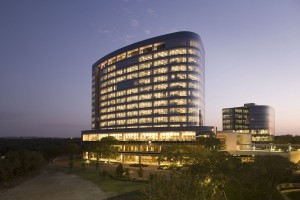If you’re a frugal eco-traveler, chances are you’ve seen the label “LEED certified” on various hotels, restaurants, transportation systems, museums, residential structures and sports stadiums. I always knew this was something that should impress me, but until lately, I didn’t really understand everything that LEED certification entails. If you’re curious like I was, here is a quick overview of what is involved in obtaining and maintaining a LEED certification.
What does LEED stand for?
LEED stands for “leadership in energy and environmental design.”
When was the certification system developed and by what organization?
The initial certification system was developed by the U.S. Green Building Council (USGBC) in March, 2000. Since then, various specific certifications have been developed for different types of buildings and initiatives. These rating systems are developed through a consensus-based process led by LEED committees. LEED committee members are a diverse group of people involved in the building and construction community who volunteer their time to develop the certification processes.
What does LEED certification measure?
The LEED certification encompasses all aspects of a building, including environment, design, infrastructure, plumbing, electricity, etc. Some of the most important elements it measures are (for all categories, see the LEED site):
- Sustainability of the construction site— discouraging construction on previously undeveloped land, seeking to minimize a structure’s impact on ecosystems and waterways, and encouraging regionally appropriate landscaping.
- Water efficiency— encouraging smarter use of water, both inside and outside the structure. This is typically accomplished through efficient appliances, fixtures and fittings inside and water-conscious landscaping.
- Energy and atmosphere—encouraging the use of energy-wise strategies such as energy use monitoring, efficient design and construction, efficient appliances, systems and lighting, the use of renewable and clean sources of energy generated on-site or off-site.
- Materials and resources— encouraging the selection of sustainably grown, harvested, produced and transported products and materials; promoting waste reduction as well as reuse and recycling.
- Quality of indoor environment— promoting strategies that improve indoor air quality, provide access to natural daylight, and improve acoustics.
- Awareness and education— encouraging home builders and real estate professionals to provide homeowners, tenants and building managers with the education and tools they need to understand what makes their home green and how to make the most of those features.
- Design innovation— rewarding projects that include a LEED Accredited Professional on the team to ensure a holistic, integrated approach to the design and construction process.
What are the different levels of LEED certification?
The LEED rating system currently has four levels of certification (listed from least to most rigorous): Certified, Silver, Gold and Platinum. These levels correspond to the number of credits accrued in five categories: sustainable sites, water efficiency, energy and atmosphere, materials and resources and indoor environmental quality.
Once a structure is LEED certified, is that the end of the process?
No; once a building receives LEED certification, it must maintain its credentials through a variety of tests and building updates each year. Any addition or change made to the building must conform to the level of LEED certification previously awarded.
What else should I know about LEED certified buildings?
Firms and building owners invest a large amount of time and money making sure their structures represent the very best in terms of sustainability and design. Why not reward these businesses with your patronage when you travel? These businesses should be easy to spot, since most feature their LEED certification level in their marketing materials.

